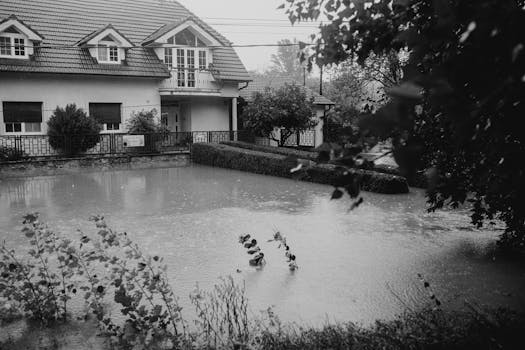Imagine coming home to unexpected damage—a burst pipe, break-in, or storm-damaged roof. Such situations disrupt daily life and spark urgent questions. How do you recover? Where do you turn for help? The answer often starts with homeowners insurance, a critical safety net many families count on.
Homeowners insurance isn’t just a formality for buying a house. It matters because natural disasters, theft, or even minor mishaps can jeopardize your home investment and personal finances. Your plan is part protection, part peace of mind, and understanding its benefits can make a major difference when you need support most.
This guide delves into what homeowners insurance covers, how it shields you from financial loss, and why making informed choices can safeguard your future. Let’s explore the unique role insurance plays in protecting both your home and all that you hold dear.
Essential Layers of Homeowners Insurance Coverage
Homeowners insurance is built from several layers that collectively protect not just the physical structure of your home, but also the life you’ve built inside it. Each policy layer addresses a different challenge, blending to create solid overall protection.
If insurance were a winter coat, the main policy would be your thickest layer—shielding you from wind and cold. Extra features, like add-on riders or liability protection, mimic scarves and gloves, covering specific vulnerabilities where you need them most.
- Dwelling coverage: Pays repair or rebuild costs for your home after damage from insured dangers like fire or storms.
- Personal property coverage: Compensates for loss or destruction of your possessions, such as furniture or electronics, whether the incident happens inside or outside your house.
- Liability protection: Shields you against legal or medical costs if someone gets hurt on your property or you accidentally cause harm.
- Loss of use: Covers living expenses if you’re forced out during home repairs after a covered incident, keeping daily life on track.
- Other structures: Safeguards garages, sheds, or fences, ensuring every aspect of your property is protected.
Together, these components offer broad protection. If a tree falls through your roof or a guest trips on your steps, the right layers in your insurance policy ensure you’re not left struggling to recover on your own.
Facing Real-Life Risks: When Insurance Becomes a Lifeline
Life brings uncertainty, even to the most careful homeowner. Picture a family returning from vacation to find their basement flooded or valuables missing—stressful and costly, but not uncommon events that insurance is designed to handle.
For instance, imagine a neighbor’s child suffering a minor fall at your barbecue. Liability coverage steps in, easing potential tensions by addressing medical bills and possible legal fees if needed, all without a major personal financial hit.
Consider an ice storm causing a tree to crash onto a garage. Instead of scrambling for thousands in emergency repairs, a strong insurance policy lets you focus on solutions—not the bill. These stories happen every day, across neighborhoods of all sizes.
Knowing your policy responds in these tough situations means you can sleep more soundly. Insurance, when thoughtfully chosen, acts as your financial lifeboat when everyday accidents or larger disasters strike.
Types of Homeowners Insurance: Choosing the Best Fit
Understanding your choices helps you match your policy to your needs. Several homeowners insurance types exist, varying by coverage breadth and personal circumstances.
- Basic Form (HO-1): Covers a short, specific list of hazards—like fire, theft, or vandalism. Only protects listed perils, leaving gaps for less common events and is rarely offered today, but can appeal to minimalists.
- Broad Form (HO-2): Lists additional covered dangers such as falling objects or roof leaks. Expands protection, making it a popular choice for first-time homeowners needing affordable, broader security.
- Special Form (HO-3): The standard policy, covers all perils except those specifically excluded. Ideal for most homes with comprehensive property and possession protection, bridging cost-effectiveness with robust coverage.
- Tenants Form (HO-4): Specifically for renters, safeguarding personal items rather than the structure. Useful for those leasing, as it fills a crucial gap regular landlord insurance doesn’t address.
- Comprehensive Form (HO-5): Offers the strongest coverage, often with higher limits and protection against even more risks. Recommended for homes of greater value or owners wanting fewer financial worries.
- Condo Form (HO-6): Meant for condominium owners, insures the unit’s interiors and personal property, complementing most HOA policies that cover shared spaces.
- Older Home Form (HO-8): Designed for historic or older structures with unique rebuild needs, reflecting differences in materials or restoration costs.
Comparing these options helps demystify the process. Whether renting a studio or insuring a classic home, there’s a tailored policy that balances cost, risk, and peace of mind.
Comparing Premiums and Deductibles: What to Expect
Shopping for homeowners insurance often comes down to two important numbers: your premium (the regular payment) and the deductible (what you pay before coverage starts). Let’s see how they compare in typical scenarios.
If you opt for a high-deductible plan, you’ll often pay lower premiums—much like choosing a pay-as-you-go gym membership over unlimited access. On the other hand, lower deductibles bring greater upfront protection but usually mean higher monthly costs.
| Scenario | Premium (Annual) | Deductible |
|---|---|---|
| Standard Protection | $1,500 | $1,000 |
| Low Deductible | $2,000 | $500 |
| High Deductible | $1,100 | $2,500 |
This table shows the give-and-take. A higher deductible shrinks yearly costs but could strain your wallet after an accident, while lower deductibles provide more predictable protection when you need to file a claim.
Strength in Numbers: Extra Protection Through Riders and Endorsements
Just as drivers might need extra roadside assistance, homeowners sometimes require specialized protection beyond standard policies. Enter riders and endorsements: optional add-ons that fine-tune coverage to individual needs and local risks.
A jewelry enthusiast may use a rider to fully cover a rare engagement ring, while a home office worker could add gadget protection. Like customizing a car with better tires, these additions transform a basic policy into a tailored shield for unique situations.
Another scenario—a property near water might benefit from flood insurance, an option not covered by typical homeowner’s plans. Earthquake endorsements are popular in seismic zones, showing how these enhancements reflect real-life location concerns.
Comparing these add-ons, it’s clear they provide significant peace of mind. Someone with family heirlooms will likely sleep better knowing their treasures are accounted for, just as a landlord will value extra rental property liability.
Benefits Beyond Rebuilding: Why Insurance is a Financial Planning Tool
- Protects savings from major home repairs, emergencies, or lawsuits by covering substantial costs you otherwise might face alone.
- Supports mortgage approval and resale value, as most lenders require valid insurance before closing a loan and buyers favor protected properties.
- Encourages responsible home management, as policy conditions often foster regular maintenance, reducing the risk of damage or larger claims.
- Offers personal liability protection, helping you avoid large out-of-pocket expenses after accidents or legal disputes with neighbors or visitors.
- Delivers emotional security and stability, letting you focus on recovery and rebuilding instead of financial panic after a disaster or unexpected loss.
- Unlocks extra assistance for temporary living expenses, ensuring life continues smoothly, even if you can’t stay home during repairs.
Having these benefits in place is like carrying a trusted toolkit. The more complete your toolkit, the more confidently you can tackle any homeownership challenge.
This strong safety net helps families budget for the unexpected. Instead of being sidelined by a single mishap, you’re empowered to bounce back—protecting dreams and securing long-term wellbeing.
Preparing for the Unexpected: Weighing Choices and Consequences
When choosing homeowners insurance, it helps to compare possible outcomes. Think of two neighbors: one with robust coverage, the other with bare-minimum protection. After a storm, their experiences can look worlds apart.
Take Jane, who chose added water-damage coverage and rode through a major flood with minimal stress. Her neighbor, Bill, skipped the extra cost and faced overwhelming out-of-pocket repairs and weeks of chaos instead. “What if” scenarios like this highlight the value of foresight.
Many homeowners discover the true impact of good insurance only after an incident. Comparing stories leads to wiser risks and fewer regrets, revealing the practical importance of customizing your policy for your family’s needs.
Final Thoughts: Making Protection Count for Every Homeowner
Homeowners insurance might appear straightforward, but it’s layered with options, choices, and long-term impact. The features you select today determine whether a shakeup becomes a manageable hiccup or a major setback in your life story.
By learning what coverage fits your home, lifestyle, and risk tolerance, you gain confidence in your financial future. Insurance transforms from a background requirement into a living tool that empowers every homeowner to recover and rebuild.
Choosing a solid policy isn’t about fearing disaster—it’s about trusting you can handle uncertainty. In a world shaped by change, it’s comforting to know that some supports never waiver. Isn’t that exactly what we seek when protecting our homes?
As you move forward, explore your policy’s options carefully, ask questions, and update coverage as your life evolves. That way, when change comes knocking, you’re ready—not just to endure, but to thrive.

